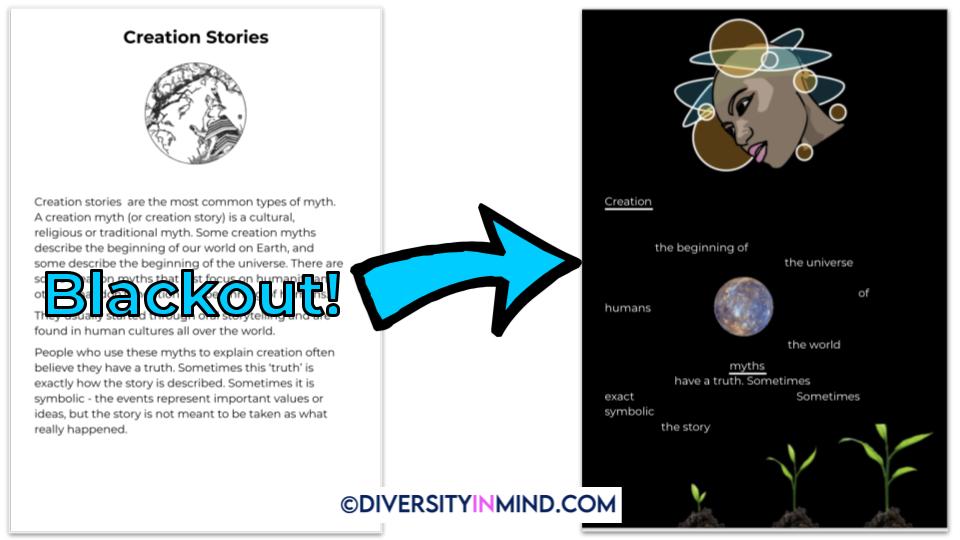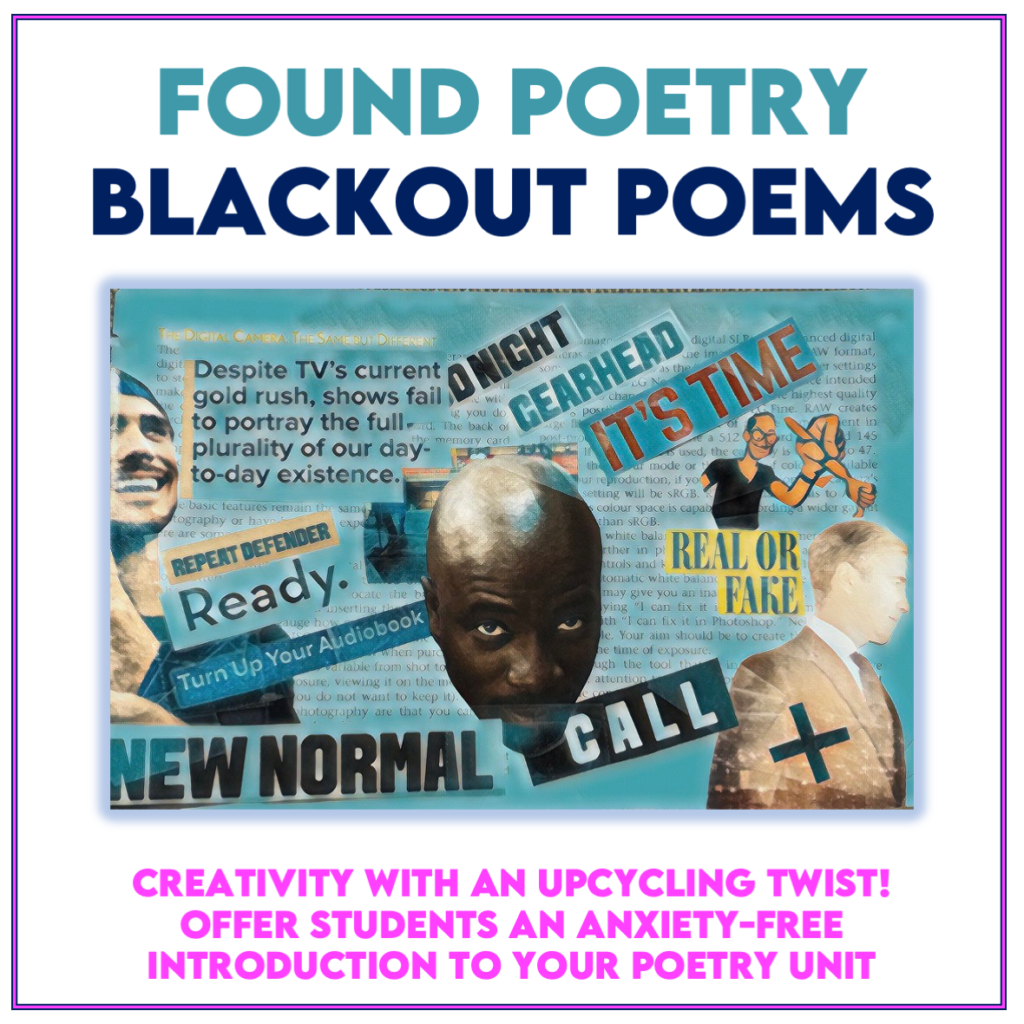Many students find poetry daunting, so – for me – it’s important to find low-pressure, fun activities to use with poems. Blackout or found poetry is one approach students love. Here, I’ll share how I use this activity with students online or in person.
For me, poetry is ultimately about playing with and manipulating language to express meaning; if I can provide opportunities for students to do just this, I feel like Smug Baby. (That’s his name, right?)

What is blackout or found poetry?
This type of poetry is created when you either:
- take a page of existing text and erase most of it to leave the message you want to communicate or
- cut out words from 1 or more texts and assemble them into phrases of meaning
See the example below produced from my Mythology Topic Summaries.

For even more ideas and examples, you can check out this Pinterest board for inspiration: bit.ly/pinpoetry
Culturally-Responsive Found Poetry
The great thing about found poetry is you can use any text that can be captured on the page. So, while we might initially think of photocopying a page from a novel, printing off an article, or copy-pasting another already on-the-page medium, there are many more possibilities. Here are just a few, but I bet your students could come up with more:
- use lyrics to their favourite song – for this I recommend removing line breaks
- use a transcript from a podcast – this can be automatically generated by a free app like this
- use the transcript from a Youtube video – this 1 minute video shows you how
- copy paste the chat from a social media channel or discussion thread – anonymised of course
- find nonfiction texts on a topic of personal interest – Wikipedia or Britannica could be starting points
- use a translation of a text from another language – Google Translate can now translate documents and webpages too
These possibilities mean you can offer students choice in the texts they use, whether it’s from a fiction or nonfiction text they connect strongly with or something they produce themselves.
Also, being able to incorporate images and symbols gives another layer of depth to the poetry they produce. By including graphics, students can express even more than is possible with words alone. In this way, you are opening up the possibilities for students to be able to bring different aspects of their identities into the creative process.
Found Poetry in Person
If you are in a classroom, students can have a great time with salvaged pages of text, markers, and maybe even some paint. For a presentation that explains how students can be creative in creating poems from other texts, click the image below for a free downloadable presentation.
Found Poetry for Distance Learning
If you’re doing distance or hybrid learning, you can create amazing found poetry using Google Slides (or any other presentation tool such as PowerPoint (paid) Impress (free)).
The video below from Ashley of Building Book Love guides students through the process.
You could present the video below during class over a video call. Alternatively, you can send students the link and they can follow it themselves using whatever materials they have to hand.
I hope I’ve convinced you that this activity is worth trying in your classroom. You know your students best so tweak it and make it your own.
Whatever you do, happy learning!



